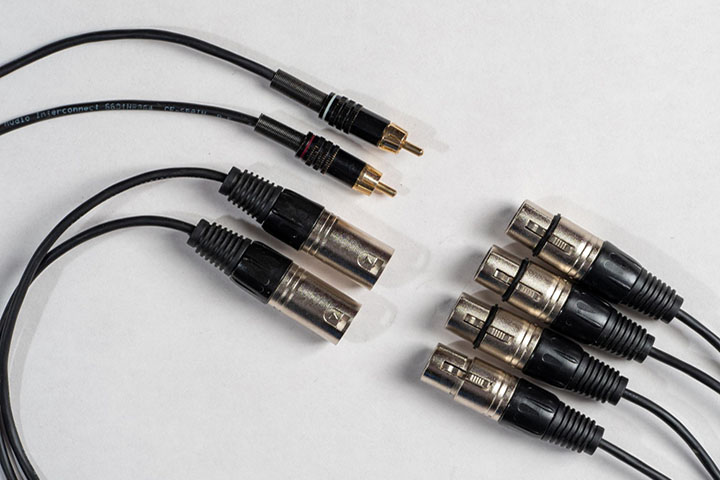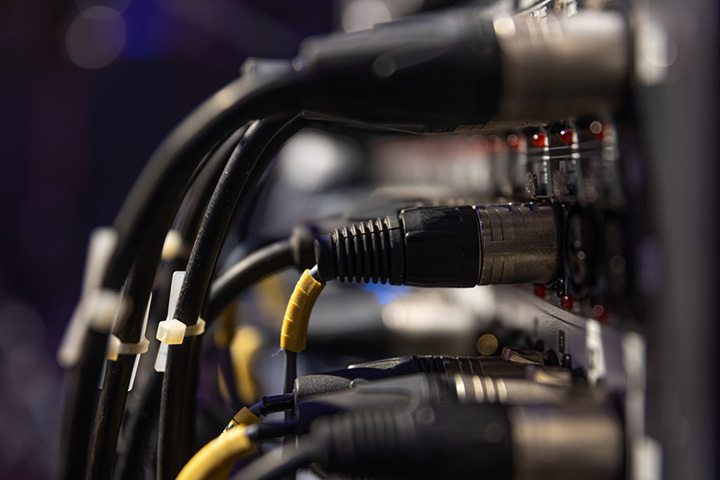Connecting your TV to a home theater system using an optical audio cable can dramatically enhance your audio experience. This simple yet effective method lets you enjoy rich, immersive sound directly from your television to your speakers. But are you wondering how to connect optical audio cable from TV to home theater?
This guide will explore the benefits of using an optical connection. There is also a step-by-step walkthrough to help you seamlessly set up your home theater for superior audio performance. Get ready to unlock a world of immersive audio and experience your entertainment in a new way.
The journey to audio bliss starts here!
Understanding Optical Audio Cables
Optical audio cables are a type of digital audio connection that use light to transmit audio signals between devices. They consist of a core of plastic or glass fibers surrounded by a protective cladding, allowing for the transmission of audio data through pulses of light.
One key advantage of optical audio cables is their ability to transmit audio signals over long distances without any loss in quality. Additionally, optical connections eliminate the risk of ground loops, which can cause audible hums or buzzes when using analog cables.
Hence, optical audio cables leverage the power of light and offer a reliable, high-fidelity solution for connecting your TV to your home theater system. Whether you’re enjoying blockbuster movies or gaming with immersive sound effects, optical audio cables provide a robust solution for enhancing your audio setup.

How to Connect Optical Audio Cable From TV to Home Theater
Compatibility check
It’s vital to ensure that your TV and home theater system can work together seamlessly for a smooth audio experience. You’ll need to check if both devices have optical digital audio output and input ports. Look for these ports on your TV and home theater receiver or soundbar.
Usually, the optical audio port is indicated by a symbol that looks like a circular headphone jack with a line through it. It might also be labeled as “OPTICAL” or “TOSLINK“.
Connecting the optical audio cable
Connecting the optical audio cable is a straightforward process, but care must be taken to ensure a proper connection. You can follow these steps:
- Locate the optical audio output port on your TV and the corresponding input port on your home theater system.
- Remove the protective caps from both ends of the optical audio cable.
- Gently insert one end of the cable into the TV’s optical audio output port, ensuring a secure fit.
- Insert the other end into the home theater system’s optical audio input port, applying a slight twisting motion for a snug connection.
By following these steps, you’ll establish a reliable optical audio connection between your TV and home theater system. This enables you to enjoy high-quality digital audio.
Securing the cable connections
You need to make sure both ends of the optical audio cable are firmly inserted into their ports to avoid audio dropouts or distortion caused by a loose connection. If the connectors have locking mechanisms, engage them to prevent the cable from accidentally disconnecting while in use.
Setting audio output on the TV
To ensure the optical audio connection works properly, you’ll need to configure the audio output settings on your TV. So, you should do the following:
- Access the TV’s audio settings menu, typically found in the sound or audio output options.
- Look for an option to select the digital audio output or enable the optical audio output.
- Some TVs may require additional configuration steps, such as enabling HDMI audio output and setting the audio format to PCM or Dolby Digital.
- If you encounter any difficulties with the audio output settings, check your TV’s user manual or seek online support.
Testing the connection
After completing the setup, test the optical audio connection by playing audio or video content on your TV while the home theater system is powered on. If you do not hear any sound from the home theater system, double-check the cable connections.
Also, review the audio output settings on both devices. If the sound is distorted or intermittent audio, try reseating the cable connections or replacing the optical audio cable with a new one.
Cable quality and length
While optical audio cables are typically resistant to interference, using a high-quality cable ensures the best signal transmission and reduces potential issues. It’s important to consider the necessary cable length for your setup.
Optical audio cables can transmit signals over longer distances compared to traditional analog cables. However, very long cables might degrade the signal or necessitate additional amplification.
For specific advice, you can consult with an audio/video professional or refer to the manufacturer’s guidelines. These resources will help you choose the right cable length and quality for your setup.
Surround sound configuration
If your home theater system supports surround sound, you should ensure the correct surround sound settings are configured on both your TV and receiver. Check your device manuals for guidance.
Make sure to select and enable the appropriate surround sound formats like Dolby Digital or DTS. Additionally, adjust the speaker settings on your receiver according to your room layout and speaker positions for optimal performance.

Conclusion
Learning how to connect optical audio cable from TV to home theater can significantly enhance your audio experience, delivering rich, immersive sound directly from your television to your speakers. Optical audio cables offer a simple yet effective solution for transmitting high-quality digital audio signals, ensuring exceptional clarity and precision in every detail of your audio.
By following the steps outlined in this guide, including compatibility checks, proper cable connection, securing cable connections, setting audio output on the TV, and testing the connection, you can establish a reliable optical audio connection. Additionally, considering cable quality and length, as well as configuring surround sound settings, further enhances your audio setup for a truly immersive entertainment experience.
Unlock the full potential of your home theater system and elevate your entertainment to new heights with an optical audio connection. So, enjoy the journey of cinematic sound quality!

